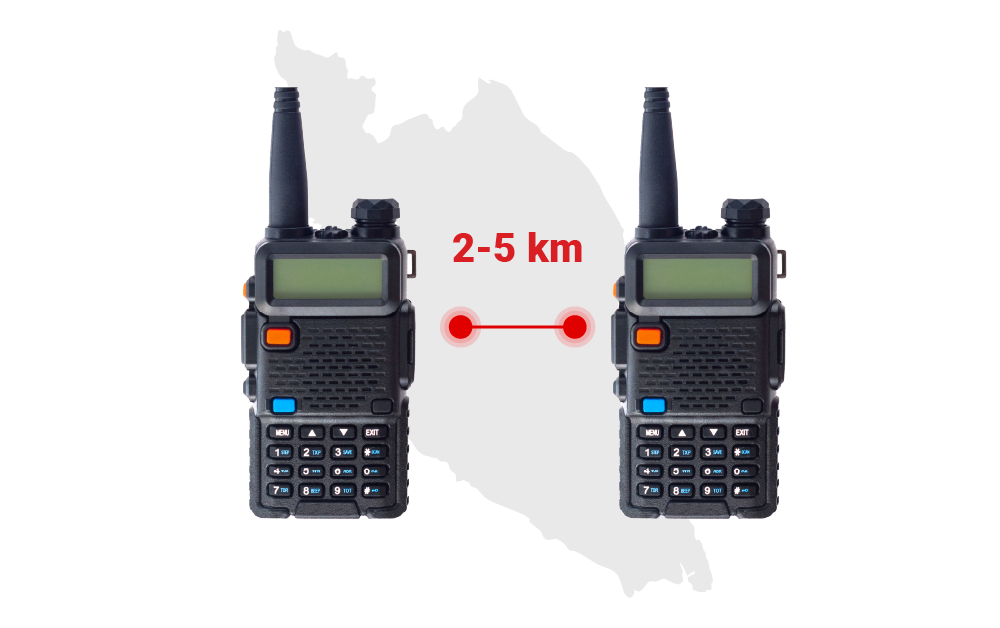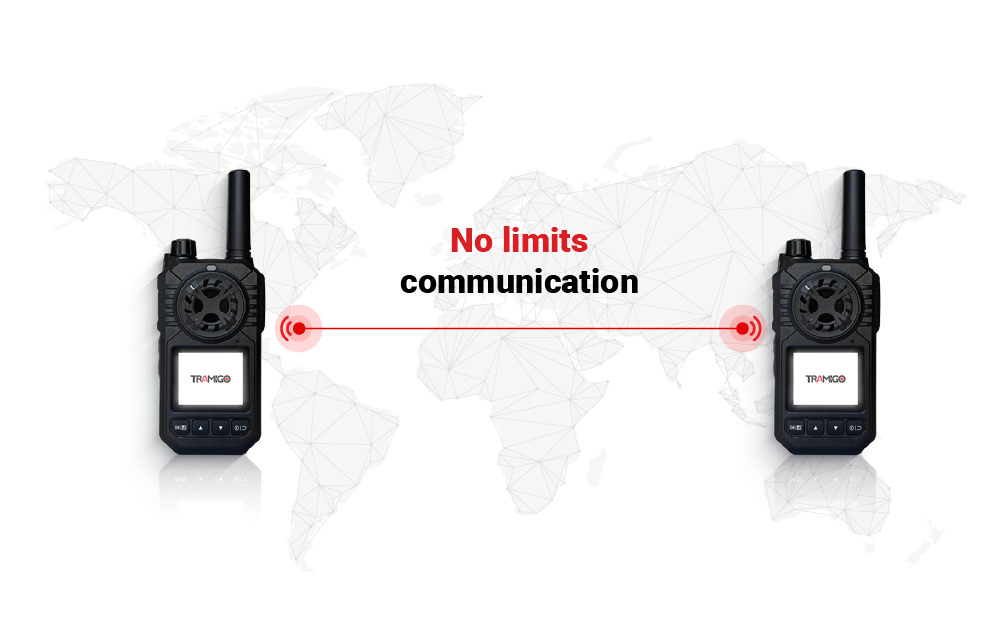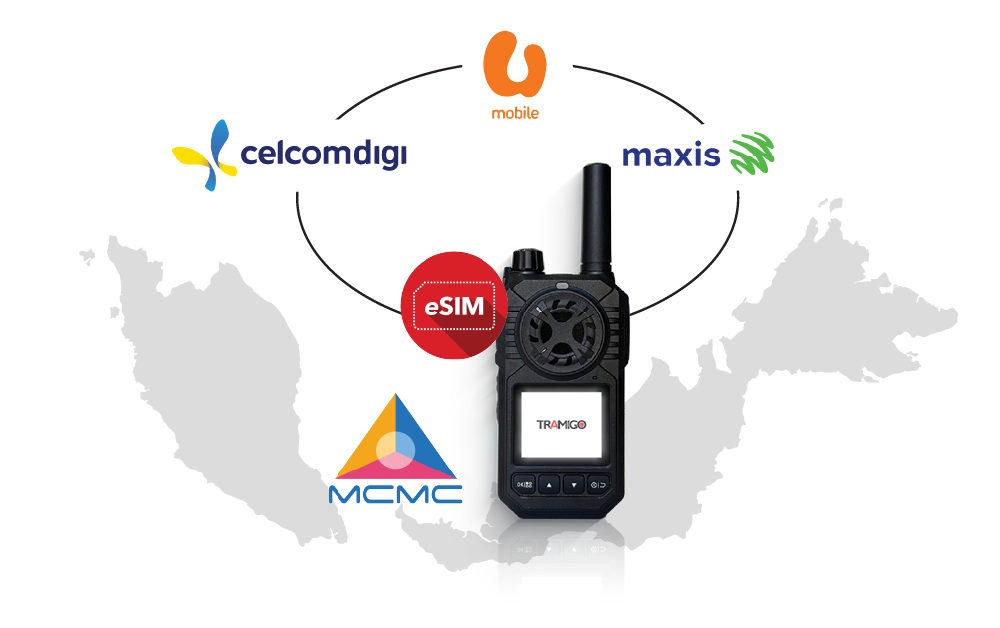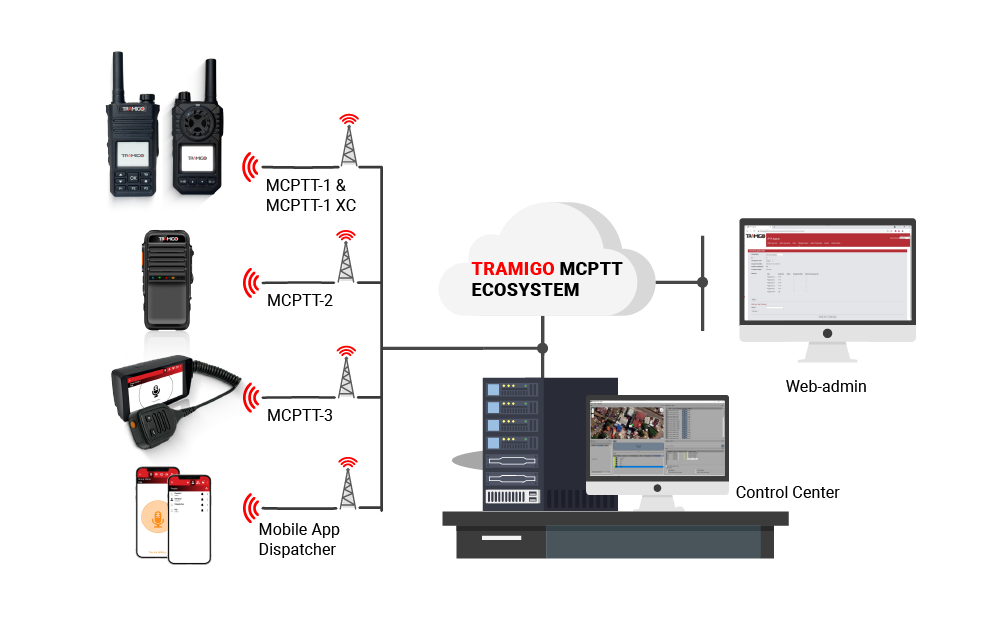
From Walkie-Talkies to PTT-over-Cellular: Transforming Business Communication Systems in Malaysia
Why reliable communication matters for businesses
In any business or government organization, instant and reliable communication is essential for safety, coordination, and efficiency. Teams that can reach each other at a moment’s notice can respond faster to problems and make quicker decisions, whether it’s a construction crew preventing an accident or a security unit ensuring public safety.
Malaysia’s diverse industries all share the need for robust communication tools. It’s no surprise that Push-to-Talk over Cellular (PoC) solutions and traditional walkie-talkies (often simply called talkies or two-way radios) are widely used to keep teams connected.
The key question for today’s organizations is: should you stick with traditional walkie-talkies, or upgrade to PoC solutions?
This blog will break down the technical concepts behind these communication systems in digestible terms, so you can make an informed decision for your communication needs.
Walkie-talkies vs. PoC: What’s the difference?
At a glance, a modern PTT handset might look just like a regular walkie talkie walkie. Both devices have a push-to-talk button and an antenna. So, what sets PoC apart? The difference lies in how the signal travels and the infrastructure behind it.
Traditional Walkie-Talkies (Two-Way Radios)
Traditional walkie-talkies communicate using high-frequency radio signals, typically over dedicated channels in the UHF or VHF bands. When two or more devices are tuned to the same channel and within range, pressing the PTT button on one device will transmit voice to the others. It’s a straightforward wireless intercom system that works well for short-range, on-site communication.

However, good walkie talkies have limitations:
- Limited range: Typically, only a few kilometers in open areas, and much less in cities or indoors.
- Expensive infrastructure: Extending coverage requires radio repeaters and antenna towers, which are costly to set up.
- Interference issues: Two-way radios use shared frequencies, so crosstalk and congestion is common.
- Security Risks: Analog 2-way radios lack encryption, making them vulnerable to eavesdropping.
- Regulatory Requirements: Businesses must often obtain licenses to use specific frequencies legally.
PTT-over-Cellular (PoC)
PoC takes the same one-button instant voice concept of a walkie-talkie but runs over modern 4G/LTE and Wi-Fi networks. Instead of using short-range radio communication, it transmits voice as data over existing mobile networks (Celcom Digi, Maxis, UMobile).

This gives PoC devices significant advantages:
- Unlimited range: As long as there’s cellular or Wi-Fi coverage, your team can operate nationwide – or even across borders – and still communicate instantly, without worrying about being within range like with traditional radios.
- No Infrastructure required: Since PoC devices use existing telecom networks, businesses don’t need to invest in expensive RF repeater systems.
- Crystal-clear audio: Unlike analog walkie talkies, modern PoC solutions use noise suppression and advanced compression for clearer conversations.
- Enhanced security: PoC conversations are encrypted, ensuring only authorized users can listen.
- Multi-functional: PoC devices support GPS tracking, and emergency alerts, combining the best of walkie-talkies and smartphones.
Simply put, PoC is a next-generation communication system that offers the instant connectivity of a walkie-talkie with the wide-area coverage of a cellular network.
Key Benefits of PTT-over-Cellular for Businesses
Traditional walkie talkie are limited to short distances unless boosted by costly radio infrastructure. PoC works anywhere with a cellular network coverage, making it ideal for nationwide operations and those managing remote teams.
Unlimited Range and Coverage
Perhaps the biggest advantage – PoC has no distance limit. Your team members can be kilometers or continents apart and still be in contact. This is ideal for nationwide operations or when coordinating between a headquarter and field teams in different locations. No more worrying about whether radios are within range or dealing with signal “dead zones” caused by buildings, terrain, or other obstructions. If there’s cellular signal or Wi-Fi, your PoC will work.
Tramigo’s Mission Critical Push-to-Talk solution takes it a step further with its multi-network connectivity. Wherever you are in Malaysia, your device automatically log-on to either CelcomDigi, U Mobile, and Maxis based on the strongest available signal. That means you can count on reliable, crystal-clear communication without interruption anytime, anywhere.

Lower Cost Than Traditional Radio Infrastructure
Because PoC uses existing cellular networks, there’s no need to invest in building private radio towers, repeaters, or other costly infrastructure to achieve wide-area coverage. This makes it a cost-effective communication system – especially for growing businesses – as it eliminates high upfront and ongoing maintenance costs associated with radio systems. You also avoid the hassle and expense of applying for radio frequency licenses or permits in most cases.
Instant Group Communication
Traditional walkie-talkies are great for one-to-many communication, but PoC takes it to the next level with greater flexibility and control. With PoC, you can instantly talk to specific teams, departments, or the entire organization at the push of a button—no need to worry about congestion or interference. Unlike analog radios with limited channels and no user management, PoC systems are centrally managed, allowing you to create talk groups, add or remove users, and assign roles in seconds. Messages are delivered clearly and securely over the network, with no delays, busy signals, or crosstalk. In short, PoC keeps the speed of walkie-talkies but adds the intelligence and scalability of a modern communication platform.
Secure and Encrypted Conversations
Securityis built into PoC by default. Voice data is encrypted over the network, and many platforms provides additional layers of encryption at the app level. Teams can also operate in closed user groups, preventing random scanners or outsiders from listening in. This level of privacy is vital for government agencies, security firms, and any organization handling sensitive information. In contrast, traditional walkie talkies – unless using digital encryption – can be picked up by anyone on the same frequency.
Tramigo’s PTT-over–Cellular (PoC) solution is built on AES-256 encryption – the industry gold standard. For organizations require maximum control, we also offer the option to host your communication server locally – ensuring your data remains entirely within your organization.
GPS Tracking & Location Services
For fleet, logistics, or field operations, GPS tracking is a game changer. PoC devices come with built-in location services, allowing managers to monitor team and vehicle locations in real time via map-based dashboard.
Tramigo’s PoC platform features integrated real-time tracking so dispatchers can instantly see where team members are, optimize coordination, and respond faster in emergencies. If someone activates an SOS alert, their exact location is immediately visible – speeding up response times and improving personnel safety.
Rugged & Reliable Devices
Traditional walkie-talkies are built to withstand tough conditions, but they often come with bulky designs due to their higher power output—typically around 5 watts. This requires larger batteries to support long operational hours, making the devices heavier and less convenient to carry.
PoC devices, on the other hand, usually operate at just 1 watt of power output, allowing for a more compact and lightweight design without compromising on battery life. Despite their smaller size, PoC devices are still built rugged—waterproof, dustproof, drop-resistant, and equipped with loud, clear audio for use in noisy environments.
Combined with smart features like GPS tracking, emergency alerts, and touchscreen controls, they deliver the durability field teams need with the added advantage of modern technology in a more practical form factor.

Scalable and Centralized Command & Control
One of the biggest advantages of PoC systems is how easily they scale and centralize control. Unlike traditional radio networks that often require manual configuration or separate infrastructure for expansion, PoC solutions let you manage everything from a cloud-based or on-premise dispatcher console. You can create or modify talk groups, assign roles, monitor device locations in real-time, and even review voice logs—all from a single dashboard.
This level of centralized visibility and control is invaluable for operations with large teams or multiple sites. Whether you’re coordinating logistics fleets, managing building security, or running emergency response units, PoC gives you the tools to scale communication efficiently and maintain complete operational oversight.

Transform Your Business Communication Today
Push-to-Talk technology is the future of business-critical communication. Whether you’re in logistics, construction, security, or hospitality, staying connected is essential to staying competitve.
If your team still relies on traditional walkie-talkies, now is the time to consider an upgrade. With nationwide coverage, encrypted conversations, GPS tracking, and no need for expensive infrastructure, PoC is a smarter, more scalable solution to transform your business.
Ready to transform how your team communicates?
Request a demo of Tramigo’s Push-to-Talk solution and discover how it can streamline your operations, improve coordination, and boost productivity.
Let us show you what smarter communication looks like.